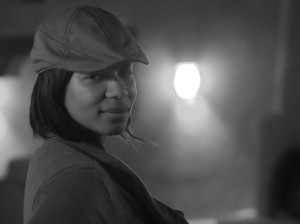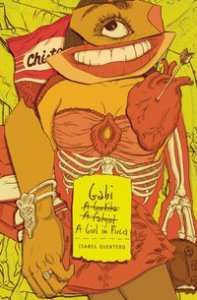by Kelli Russell Agodon
Reposted with permission from Ms. Agodon. This article was first published at Medium.com on May 24, 2015.
For six years, I worked as Co-Editor-in-Chief at a small literary journal in the Northwest, Crab Creek Review.
If I had to make one general statement about what I most learned at the press as an editor, the big revelation was that men and women submit their work differently.
Here is what I noticed —
If an editor of our press rejected work from a male writer, but wrote something like, “This came close. We’d like to see more of your work, please send us more poems” on the rejection note — we would usually receive another submission from the male writer within the same month and sometimes even within a few days after he received his rejection.
When we sent this same note to a woman writer, she might resubmit her work in 3–6 months, but more likely, we would not hear from her until over six months to a year later. Sometimes, she will not resubmit at all.
I don’t fully understand why this is, but as a woman writer who grew up in the age of not imposing on people or the fear of being a bother or “too pushy,” here’s my guess to why this happens —
When we send a rejection to a man and ask a man to resubmit, he thinks, “They like my work and they want more; I better get it to them soon before they don’t want it anymore.” And the submission is sent. (Right now, there’s that cliche’ line about men “wanting to spread their seed” going through my head.)
When we ask a woman to resubmit she thinks, “When would be the best time to resubmit? I don’t want to seem pushy, but I do want to get them my work. Maybe I should wait a few months so I don’t seem desperate or so I don’t irritate them by submitting so fast. Do they really want to see more work, or were they just being nice? I’m sure they want to see more work, but I should probably wait a few months, I wouldn’t want to be an imposition and it would be better manners and more respectful to wait a bit. Or should I? Yes, I’ll play it cool and wait a few months. I wouldn’t want to impose.”
And then the woman writer waits or forgets or sends out her submission a few months to a year later (The generalization of women over-thinking things is going through my head right now.)
I know some of what I write here is a big generalization — some women when asked to send more work, do so and do so quickly. But so far as being an editor (and a woman writer) this has been my overall experience — women do not resubmit as quickly (and perhaps as much) as male writers do.
I have even done this self-sabotage dance more than once myself. Once I was so happy with the handwritten rejection from the New Yorker, where Alice Quinn handwrote on my rejection a personal note,“We’d like to see more of your work,” I didn’t resubmit for years because an almost from the New Yorker was a win; it was good enough for me. And in fact, by resubmitting to the New Yorker, I might actually fail — I might get back a blank rejection as opposed to this feel-good-rejection-note I had just received. Why trade mediocrity for possible rejection? I must have been thinking. This thinking does not help any writer, as an almost is not a “win” in publication credits.
For many years, when I received a note saying, “We’d like to see more of your work. We liked what we saw, please resubmit,” my response was to wait until the next year to send again because I didn’t want to send too soon. Or many times, I just wouldn’t resubmit.
After working as an editor (and now as an editor at Two Sylvias Press), I no longer do that. Why? Because I realize how easy it is to forget a writer. Now, if someone likes my work and wants to see more (and it’s a journal I want to be published in), I send them more work within a month of receiving their note.
~
So Ladies, Women Writers, Sisters of Poetry and Prose —
When an editor tells you they like your work and asks you to resubmit, do so and do so soon after.
The men have it right — the editors do want to see your work and you want to submit before they forget about you and your work. You want your name to be on the tip of their tongues and not hiding in the back of their mind.
This is where many of our “have good manners and think about other’s feelings” good-girl childhoods do not serve us well.
I know when we said at Crab Creek Review that we wanted to see more of a writer’s work, we did. We weren’t just saying it to be nice. And we don’t say it to everyone. If we did, we’d be creating a lot of unneeded work for ourselves.
So let’s say it together — If an editor says they want to see more of your work, they want to see more of your work — they are not just saying it to be nice.
And if you get this note on your rejection slip, send them more work and within the next two months of receiving the note. No later. I mean it. You have permission to respond quickly and professionally. And no one thinks anything bad of you. Promise.
You are not being pushy or rude, you are taking care of your writing life.
~
And to the Gentlemen who are reading —
Men, Good Chaps, Brothers of Poetry & Prose —
Keep doing what you’re doing. But fewer poems about killing frogs when you were a boy. And less epic work, we like your one-to-two page poems best.
~
P.S. And to anyone who got to this article because they googled “submit like a man” — you are probably very disappointed right now. . .

Kelli Russell Agodon (@kelliagodon) is a poet, writer, editor, book designer, & cofounder of Two Sylvias Press living in the Seattle area.
She was the Winner of Foreword Magazine’s Book of the Year Prize in Poetry as well as a two-time Finalist for the Washington State Book Awards. Her work has appeared in The Atlantic, New England Review, and O, The Oprah Magazine.
She is currently working on her fourth collection of poems and finishing a memoir.


 Alana Saltz is a writer, freelance editor, and occasional ukulele rocker residing in Los Angeles. Her essays can be found in The Los Angeles Times, The Huffington Post, HelloGiggles, RoleReboot, The Manifest-Station, and more. You can visit her website at
Alana Saltz is a writer, freelance editor, and occasional ukulele rocker residing in Los Angeles. Her essays can be found in The Los Angeles Times, The Huffington Post, HelloGiggles, RoleReboot, The Manifest-Station, and more. You can visit her website at 




